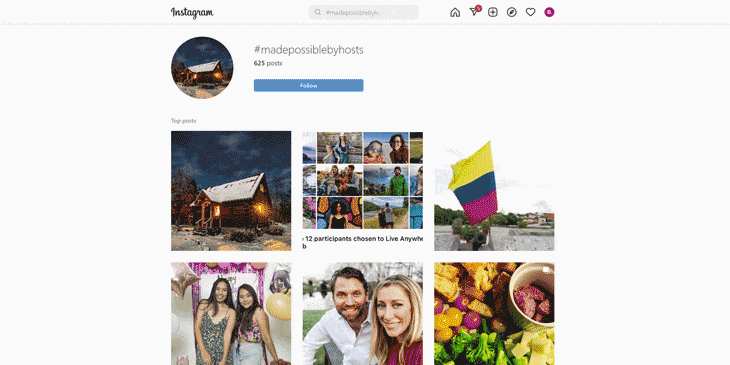Defining a global content strategy in a post-Covid climate
We know that a typical content strategy looks at achieving your business objectives and KPIs through diverse formats and topics at every stage of the funnel. A global content strategy sets out to accomplish the same thing whilst uncovering specific trends and nuances for every target location.
A localised content strategy allows brands to connect with their audience on a personal level. Customers can feel more understood and a direct tone of voice can generate a stronger connection and improve trust, which can create a real impact. From customer retention and engagement to conversions, the benefits of localising your strategy can influence your business goals in the long term.
Reaching your brand targets in a post-Covid climate can feel even more challenging, but as shopping habits adapt, there’s now a greater customer desire for authentic content. If you spend time understanding how your customers are feeling and create content that speaks to them directly, you’re going to notice an uplift in returning customers and customer loyalty.
Sounds too good to be true? Read on to uncover the tactics we’ve seen help make this possible.
Our tactics for building a successful content strategy in new markets
1. Set achievable content goals
To dominate a new market you have to be realistic. If your brand originally operates in North America but is looking to compete in the German market, things are going to be a little different. Not only is there a language shift, but population differences mean that results, quite literally, can’t translate.
What we suggest:
Know what success looks like to you in your current markets. Is it revenue growth? Or organic clicks? Your KPIs should tie back to your business goals for that market and most importantly, they need to be achievable.
2. Audit existing content
Creating new content for a new location should start with knowing what your current customers in your current location like. Auditing your existing content makes it clear what topics, formats, and channels your customers are most receptive to.
What we suggest:
At Builtvisible, all our strategies are lead by data. An audit forms the foundation of our recommendations as it brings to light the topics a brand should talk about because the data has proven it’s more likely to resonate with the right audience.
3. Know your audience
Understanding the interests and habits of your new customer types is essential when breaking into new markets. As culture, language and trends differ, this can create a completely different customer type to who you were originally targeting.
What we suggest:
To find out who your new customers are, review online platforms, social media, and relevant publications in that location. You want to look out for how topics are spoken about online – what’s the sentiment like? What types of content topics are trending right now? How are these formatted?
4. Research the market
If your brand owns a large portion of your niche’s market in one location, that doesn’t automatically translate elsewhere (if only it was that easy). Research is required to understand the competitor landscape and identify where the gaps are to capitalise on in the most effective way.
What we suggest:
To know how competitive your new target market is, you need to deep-dive by analysing the content across the competitor domains. We want to find out how these competitors are talking to customers, what formats they’re using, and what topics are most popular. This is a service we offer where we have custom-built tools to help us speed up the data process, so we can hone in on the recommendations you need to take to outrank your new competitors.
5. Understand the cultural and behavioural shifts
Translating top-performing content from one market to another isn’t necessarily going to secure the difference you’re looking for. It’s important to take time to understand trends in your new market, so you know for certain what makes this customer tick and what you shouldn’t bother talking about. There also might be cultural shifts due to religion, language, or politics that you need to be aware of, so you aren’t cancelled before you’ve even started.
What we suggest:
Use social listening and trend monitoring to begin identifying whether your new market trends are achievable. If you don’t have access to any paid tools, platforms such as Google Trends, are a great way to spot trend shifts as well as emerging trends on a niche level.
A brand no stranger to understanding different cultural behaviours through a global strategy is Nike, and their campaign ‘Nike By You’ emotionally engages with their customers through personalisation. Nike know that styles and trends vary across the globe, so now customers can flexibly adapt their trainers to suit their personal style, which can also align with any cultural preferences.

Nike by You offers a personalised design experience to customers around the world
6. Create your content plan
Once you’ve developed all your insights and set your goals, the next part is to outline everything into a coherent plan. A content plan is an essential step in developing your approach to creating your content and sets you up to know when to expect performance changes.
What we suggest:
Your content ideas should be data-backed, as should your content plan. This means that planned content should correlate with any trend peaks, seasonality uplifts and any wider industry trends.
Pros and cons to creating unique, localised content
A localised content strategy is a useful tactic when expanding your business, yet if you’re still unsure whether it’s the right approach for your brand goals and needs, then here’s what you need to know:
The pros
- Local market awareness: Creating unique content in your target countries can improve your brand’s visibility and relevancy to that audience.
- Increased brand authority: Personalised content can encourage customer loyalty and can shift brand perceptions to highly trustworthy and valuable.
- Boosted local engagement: Understanding cultural differences allows you to speak directly to your customers and creates a greater chance of positive online interaction.
The cons
- Consistency with tone of voice: The messaging of your content might shift to suit different cultures and languages, but you need to ensure the intent, purpose and tones remain recognisably you. Establishing your style guide pillars will help you achieve this consistency. Innocent Drinks does this all too well, leading with informal, witty copy that showcases their brand identity.
- Additional resource to push localised content live: Adapting your content strategy to a localised approach can often equate to more work. This requires planning upfront to ensure you have the right resources to make it successful, or working with a trusted agency partner.
Final tips to help you master your original content
We’ve gone through the why and the how, so let’s finish with our top tips for a successful international content strategy.
Diversify across different stages
Targeting a new audience should capture customer interest at every possible stage of the user journey. Your content should incorporate a mix of funnel stages to ensure existing, new and returning customers all feel heard and engaged with.
Identify the right formats
Creating content to engage your customers should cover the relevant topics, but it should also be formatted in the right way to maximise engagement. Whether it’s a video or a long-form guide, research and testing is required to know the content type that makes the most sense for your topic, audience and brand.
Repurpose existing content
We’ve spoken a lot about creating unique content for your individual audiences, yet that doesn’t mean this content has to be all from scratch. Refresh small elements like your on-page data or re-format a video in a blog guide to repurpose what’s already working – the options are endless and the rewards are huge. If you’re unsure where to start, a quick win could be to transcribe an on-page video asset into your new target language for greater accessibility and engagement.
Use your audience’s content
When you’re looking to expand your local brand awareness and engagement, capitalising on user-generated content can increase your credibility at a cheap rate. Sharing and spotlighting content created by your customers about your brand generates a sense of relatability and authenticity that is unmatched when relying on your own content.
A brand that does this well is Airbnb, where their most recent campaign, ‘Made Possible By Hosts’, features guests enjoying their Airbnb experiences. The brand timed the campaign release after COVID, where customers were missing these shared experiences and it triggered feelings of nostalgia, happiness and inspiration to get out and appreciate more travel adventures.

Recent Instagram posts for Airbnb’s #madepossiblebyhosts campaign
Avoid cannibalisation
If your new market audience operates in the same language as your existing customer, then duplicating that content can create cannibalisation issues. Review our guide to content duplication when targeting an international audience to understand the best approach for your business and website.
Don’t forget to promote
Publishing your content and hoping the right people find it is fine, especially if you have followed our best practice tips. But, if you want your content and brand to make an even bigger impact and boost the time to conversion, then you can’t disregard the importance of distributing content. Tactics such as social or digital PR can elevate your message and drive conversions.
Final thoughts
When your business is breaking into a new market, a dedicated content strategy is a valuable way to hit your KPIs as quickly as possible. With an outcome of heightened audience trust, engagement, and brand authority, it’s an approach you shouldn’t overlook.
If you want to know more about how we successfully plan and execute content strategies in new target markets for our clients, then feel free to get in touch and chat things through with one of our dedicated specialists.
